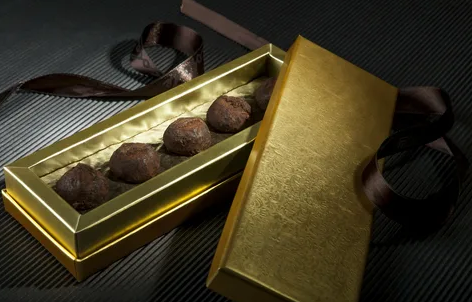
The Art and Science of Chocolate Box Packaging
Chocolate, a universally beloved treat, deserves packaging that not only protects but also enhances its allure. The intricate world of chocolate box packaging merges art, science, and marketing to create an experience that begins long before the first bite. This article delves into the multifaceted nature of chocolate box packaging, exploring its history, design elements, materials, and environmental impact.
A Brief History of Chocolate Packaging
From Humble Beginnings to Luxury Items
The history of chocolate box packaging is as rich as the treat itself. In the 17th and 18th centuries, chocolate was a luxury item often sold in loose form or wrapped in simple paper. The Industrial Revolution marked a turning point, introducing mass production and the need for more sophisticated packaging.
The Victorian Era and the Birth of the Chocolate Box
The Victorian era saw the rise of the decorated chocolate box. Companies like Cadbury and Fry’s began to package chocolates in ornate, reusable tin boxes, turning packaging into keepsakes. These early boxes were often decorated with romantic and festive themes, reflecting the gift-giving culture of the time.
Modern Innovations
Today, chocolate packaging is a blend of tradition and innovation. While the charm of vintage designs persists, modern packaging incorporates advanced materials, sustainability considerations, and cutting-edge technology to meet contemporary consumer demands.
Design Elements: Crafting an Emotional Connection
The Power of Visual Appeal
Visual appeal is paramount in chocolate packaging. The choice of colors, typography, and imagery can evoke emotions and set expectations. For instance, dark, rich colors like brown and gold often signify premium quality, while bright, playful colors may appeal to younger audiences or casual gift-giving occasions.
Typography and Branding
Typography plays a crucial role in conveying the brand’s personality. Elegant, serif fonts might suggest luxury and tradition, while bold, sans-serif fonts can indicate modernity and fun. The brand logo is also a focal point, serving as a visual anchor that enhances brand recognition and loyalty.
Imagery and Themes
Imagery on chocolate boxes can range from minimalist designs to intricate illustrations. Seasonal themes, such as Christmas or Valentine’s Day, and cultural motifs can make packaging more relevant and attractive to specific audiences. These visual elements not only attract consumers but also tell a story, making the unboxing experience memorable.
Material Choices: Balancing Aesthetics and Functionality
Traditional Materials
Cardboard and paper have long been the mainstay materials for chocolate boxes. These materials are versatile, allowing for various printing techniques and finishes such as embossing, foiling, and spot UV coating. They are also lightweight and relatively inexpensive, making them ideal for mass production.
Modern Materials
Plastic and metal are also used, especially for high-end chocolates. These materials offer durability and a premium feel. Innovations such as biodegradable plastics and recycled metals are gaining traction as brands seek to balance luxury with environmental responsibility.
Sustainable Packaging
Sustainability is becoming a key consideration in packaging design. Consumers are increasingly aware of the environmental impact of packaging waste. Brands are responding by using recyclable materials, reducing packaging volume, and exploring biodegradable options. For instance, some companies are experimenting with plant-based inks and compostable packaging to minimize their ecological footprint.
Functional Considerations: Protecting the Product
Preservation of Quality
Chocolate is a delicate product that requires protection from heat, moisture, and light. Packaging plays a critical role in preserving the quality and freshness of chocolates. Inner linings made of aluminum foil or food-safe plastic create a barrier against external elements, ensuring the product remains in optimal condition.
Ease of Use
User-friendly design is another crucial aspect. Features such as easy-open tabs, resealable lids, and compartments for individual pieces enhance the consumer experience. These elements not only make the product more convenient to enjoy but also add to the overall appeal of the packaging.
Shipping and Handling
Robust chocolate box packaging wholesale is essential for chocolates intended for shipping. Shock-absorbing materials and secure closures prevent damage during transit. Additionally, packaging must be designed to fit within standard shipping guidelines to optimize logistics and reduce costs.
The Role of Packaging in Marketing
Shelf Appeal and Retail Strategy
In a retail environment, packaging is often the first point of contact between the product and the consumer. Eye-catching designs can stand out on crowded shelves and attract attention. Strategic use of colors, fonts, and images can influence purchasing decisions, making packaging a critical component of the marketing mix.
Brand Differentiation
Packaging also serves as a tool for brand differentiation. In a market flooded with similar products, unique packaging can set a brand apart. Limited edition packaging, collaborations with artists, and innovative designs can create a buzz and drive sales.
Storytelling and Brand Values
Packaging is a powerful medium for storytelling. It can convey the brand’s history, values, and commitment to quality. For example, a brand might use packaging to highlight its use of ethically sourced ingredients or its support for sustainable practices. Such narratives resonate with consumers, particularly those who prioritize ethical consumption.
Innovations in Chocolate Box Packaging
Smart Packaging
Technological advancements are ushering in a new era of smart packaging. QR codes, NFC tags, and augmented reality (AR) can provide consumers with interactive experiences, such as virtual tours of chocolate factories or detailed information about the sourcing and production of the chocolates.
Personalized Packaging
Personalization is another trend gaining popularity. Brands are offering customizable packaging options where consumers can add names, messages, or even photos. This adds a personal touch, making the product a perfect gift for special occasions.
Minimalist and Eco-Friendly Designs
Minimalist designs that emphasize simplicity and elegance are trending. These designs often use eco-friendly materials and focus on reducing waste. The minimalist approach can also make the brand appear more sophisticated and aligned with modern aesthetic sensibilities.
The Future of Chocolate Box Packaging
Sustainability as a Core Principle
As environmental concerns continue to rise, sustainability will likely remain a core principle in packaging design. Innovations in materials science will lead to more sustainable options that do not compromise on aesthetics or functionality. Brands will need to balance luxury with environmental responsibility to meet consumer expectations.
Enhanced Consumer Experience
The future of chocolate box packaging will also see a greater emphasis on enhancing the consumer experience. This could involve more interactive and personalized elements, as well as designs that make the unboxing experience as enjoyable as the product itself.
Integration of Technology
The integration of technology into packaging will continue to evolve. Smart packaging will become more sophisticated, offering features such as freshness indicators, temperature monitoring, and interactive content. These innovations will not only enhance the consumer experience but also provide valuable data to manufacturers.
Conclusion
Chocolate box packaging is a dynamic and multifaceted field that combines art, science, and marketing. From its historical roots in simple paper wrappings to the sophisticated, sustainable, and interactive designs of today, packaging has always played a crucial role in the chocolate industry. As consumer preferences continue to evolve, the future of chocolate box packaging promises to be as rich and varied as the chocolates it encases. Brands that can effectively balance aesthetics, functionality, and sustainability will stand out in the competitive market, offering consumers not just a product, but an experience to savor.



Leave Your Comment